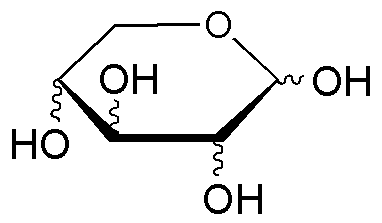DL-Xylose is widely utilized in research focused on:
- Food Industry: Used as a sweetener and a sugar substitute in various food products, DL-Xylose provides a low-calorie option for consumers looking to reduce sugar intake.
- Pharmaceuticals: It serves as a key ingredient in the formulation of certain medications, particularly for managing diabetes, due to its low glycemic index.
- Biotechnology: Employed in the production of xylooligosaccharides, which are beneficial prebiotics that promote gut health and enhance digestion.
- Research Applications: Utilized in laboratory studies to investigate carbohydrate metabolism and its implications in various metabolic disorders.
- Animal Feed: Incorporated into animal nutrition to improve gut health and nutrient absorption, contributing to better growth rates and overall health in livestock.
General Information
Properties
Safety and Regulations
Applications
DL-Xylose is widely utilized in research focused on:
- Food Industry: Used as a sweetener and a sugar substitute in various food products, DL-Xylose provides a low-calorie option for consumers looking to reduce sugar intake.
- Pharmaceuticals: It serves as a key ingredient in the formulation of certain medications, particularly for managing diabetes, due to its low glycemic index.
- Biotechnology: Employed in the production of xylooligosaccharides, which are beneficial prebiotics that promote gut health and enhance digestion.
- Research Applications: Utilized in laboratory studies to investigate carbohydrate metabolism and its implications in various metabolic disorders.
- Animal Feed: Incorporated into animal nutrition to improve gut health and nutrient absorption, contributing to better growth rates and overall health in livestock.
Documents
Safety Data Sheets (SDS)
The SDS provides comprehensive safety information on handling, storage, and disposal of the product.
Product Specification (PS)
The PS provides a comprehensive breakdown of the product’s properties, including chemical composition, physical state, purity, and storage requirements. It also details acceptable quality ranges and the product's intended applications.
Certificates of Analysis (COA)
Search for Certificates of Analysis (COA) by entering the products Lot Number. Lot and Batch Numbers can be found on a product’s label following the words ‘Lot’ or ‘Batch’.
*Catalog Number
*Lot Number
Certificates Of Origin (COO)
This COO confirms the country where the product was manufactured, and also details the materials and components used in it and whether it is derived from natural, synthetic, or other specific sources. This certificate may be required for customs, trade, and regulatory compliance.
*Catalog Number
*Lot Number
Safety Data Sheets (SDS)
The SDS provides comprehensive safety information on handling, storage, and disposal of the product.
DownloadProduct Specification (PS)
The PS provides a comprehensive breakdown of the product’s properties, including chemical composition, physical state, purity, and storage requirements. It also details acceptable quality ranges and the product's intended applications.
DownloadCertificates of Analysis (COA)
Search for Certificates of Analysis (COA) by entering the products Lot Number. Lot and Batch Numbers can be found on a product’s label following the words ‘Lot’ or ‘Batch’.
*Catalog Number
*Lot Number
Certificates Of Origin (COO)
This COO confirms the country where the product was manufactured, and also details the materials and components used in it and whether it is derived from natural, synthetic, or other specific sources. This certificate may be required for customs, trade, and regulatory compliance.


